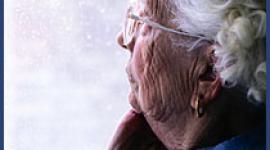Testimony of Anne Krauss
Testimony of Anne Krauss, former staff member of the NY OMH Before the Mental Health Committee of the NY State Assembly
 Hello. My name is Anne Krauss. I'm presently employed as the Administrator for the National Association for Rights Protection and Advocacy, although I am here today as a private citizen, not as a representative for that organization. Up until March 21 this year, I worked for the New York State Office of Mental Health as Recipient Affairs Specialist for Long Island. On March 9, I received a call from John Tauriello, Deputy Commissioner and Counsel of the New York State Office of Mental Health (NYS OMH) and Robert Meyers, NYS OMH Deputy Director of the Division of Community Care Systems Management. They informed me that if I continued to actively advocate on behalf of Paul Thomas in his efforts to prevent Pilgrim Psychiatric Center from shocking him, OMH would view this as a conflict of interest with my employment. I explained that I was engaged in this activity on my own time and at my own expense. However, they insisted that, since Mr. Thomas is engaged in a legal battle with the organization for which I worked, that it would be unethical for me to advocate for Mr. Thomas while working for OMH. On March 21, I submitted my letter of resignation, which was accepted on March 22.
Hello. My name is Anne Krauss. I'm presently employed as the Administrator for the National Association for Rights Protection and Advocacy, although I am here today as a private citizen, not as a representative for that organization. Up until March 21 this year, I worked for the New York State Office of Mental Health as Recipient Affairs Specialist for Long Island. On March 9, I received a call from John Tauriello, Deputy Commissioner and Counsel of the New York State Office of Mental Health (NYS OMH) and Robert Meyers, NYS OMH Deputy Director of the Division of Community Care Systems Management. They informed me that if I continued to actively advocate on behalf of Paul Thomas in his efforts to prevent Pilgrim Psychiatric Center from shocking him, OMH would view this as a conflict of interest with my employment. I explained that I was engaged in this activity on my own time and at my own expense. However, they insisted that, since Mr. Thomas is engaged in a legal battle with the organization for which I worked, that it would be unethical for me to advocate for Mr. Thomas while working for OMH. On March 21, I submitted my letter of resignation, which was accepted on March 22.
Up until December, 2000, electroshock had not been an issue to which I had devoted much attention. I would have been surprised to learn that less than four months later, electroshock would be the issue which would lead me to resign. When I learned in December that Pilgrim Psychiatric Center was seeking to treat a patient with electroshock against his family's wishes, I began to seriously educate myself about this complicated issue. When I learned that Paul Thomas, whom I first met in 1998, had received over 50 shock treatments in less than two years despite his objections, I felt compelled to act.
I am a person who firmly believes that it is important to gain a scientific understanding of a problem before reaching any decisions about a course of action. I come from a family of scientists. Both my father and my brother were educated at the California Institute of Technology. I was a physics major at Harvard University when I married and dropped out to raise a family. My husband received a Ph.D. at Cal Tech in biochemistry after receiving a medical degree at Cornell College of Medicine. I eventually finished my undergraduate education at Empire State College, then entered a Ph.D. program in experimental psychology and cognitive neuroscience at Syracuse University. Once again, family obligations cut short my educational pursuits, but my devotion to scientific approaches remains unwavering.
Proponents of ECT claim that research overwhelmingly supports the hypothesis that electroshock is safe and effective. A cursory glance at the research literature would appear to support this claim. However, I would caution the members of this Assembly Committee to look very closely and critically at the scientific evidence which is currently available. In ten minutes, there is not time to adequately examine what research has been done, or, more importantly, what research has not been done. Even if this whole day were devoted to understanding the research picture, we could only scratch the surface. However, let me share some information which I hope will pique your curiosity, as it did mine, so that you will withhold judgment until you have time to thoroughly investigate the evidence.
Electroshock devices are classified by the Food and Drug Administration as Class III medical devices. Class III is the most stringent regulatory category for medical devices. Electroshock devices were placed in this category because of their potential to cause unreasonable risk of illness or injury. These devices can be marketed under current regulations only because they have been "grandfathered" in by virtue of being marketed prior to 1976, when the medical device classification and regulation system was put into place. The manufacturers of these devices have never submitted the evidence which the premarket approval process requires of all devices introduced after 1976. Premarket approval is a process of scientific and regulatory review to ensure the safety and effectiveness of class III devices. Keep this in mind if you hear that older reports of neuropathology resulting from electroconvulsive therapy in experimental animals and humans are "outdated". Similar studies have not been conducted using contemporary shock techniques and devices. Such studies have not been required for marketing, since these new devices are accepted by the FDA to be "as safe and as effective or substantially equivalent" to the older devices. Until such studies are conducted, there is a lack of scientific evidence that these newer devices actually are safer, as claimed.
You may have noticed that I prefer the term "electroshock" rather than "ECT" or "electroconvulsive therapy". The term ECT implies that the effectiveness of the treatment depends upon the production of a convulsion, or seizure. If this were indeed the case, the safest device would use the minimum dosage of electricity necessary to induce a convulsion. Such a device was developed, and, indeed, the memory changes, confusion, and agitation observed in people shocked with this device were not as large as observed in association with higher dose machines. However, use of low dose machines was abandoned, because psychiatrists found them considerably less effective. This suggests that the size of the electric shock, rather than simply the length of the convulsion, plays an important role in this treatment. It also suggests that negative side effects are inseparable from what psychiatrists perceive as the therapeutic effect. It is also interesting to note that even proponents of electroshock do not claim a therapeutic effect lasting longer than a few weeks, which coincidentally is the same length of time required for the most obvious of the memory disruptions to clear.
In considering the evidence, I also caution you to distinguish between solid research evidence and mainstream medical opinion. Remember that Moniz was awarded a Nobel prize for the lobotomy, which was considered a major medical breakthrough in its day. Remember also that tardive diskenesia was recognized by critical researchers and, yes, anecdotally by patients, for well over a decade before the medical establishment was willing to admit the true dimensions of this serious problem associated with pharmaceutical treatment of psychosis. Remember this before you hastily marginalize researchers and patients who are critical of electroshock.
During these past five months I have learned that, despite rhetoric which pays lip service to a concept of recovery from psychiatric disability based on self-help and empowerment, in practice OMH acts as though the only legitimate treatments are pharmaceuticals or electroshock. Twelve years ago I was hospitalized with what was diagnosed as a schizophreniform psychosis, and I had experienced considerable psychiatric disability even prior to my hospitalization. Symptoms of neuroleptic malignant syndrome, a life-threatening side-effect of medication, abruptly ended the pharmaceutical treatment I had been receiving. Since that time, a combination of psychotherapy and self-help through peer support have helped me to recover to a point that I no longer consider myself to have a psychiatric disability.
I realize that my story can be criticized as anecdotal, however, a careful review of the literature will reveal considerable evidence that, even for people experiencing extreme psychiatric states, effective alternatives exist other than drugs and shock. Dr. Bertram Karon conducted a study in which psychotherapeutic treatment of people diagnosed with schizophrenia was compared to pharmaceutical treatment. This study, which was funded by NIMH, provided evidence that the outcomes for the group treated with psychotherapy were superior to those of the drug treated group.
In his book, Recovery from Schizophrenia, Richard Warner compares conditions in non-industrialized countries to those in the West, in an effort to explain why, although the appearance of altered state is relatively constant across cultures, recovery rates seem to be much higher in the non-industrialized world. The factors he identifies which appear to promote recovery in non-western cultures are remarkably similar to those present in the self-help community which I found helpful in my recovery.
Both of the people I know for whom OMH is seeking court ordered shock have not been given adequate access to psychotherapy. Limitations on visitation have also seriously curtailed their access to peer support. One person is still not permitted to receive visitors other than immediate family members. The ward environment in which he must live would be stressful for anyone, and certainly has not been designed to effectively promote recovery in a person who is experiencing an altered state. Yet OMH claims that electroshock is the only available option for both of these individuals, because of dangerous effects each has experienced from drug treatment.
Recommendations:
At a minimum, a moratorium on forced electroshock treatment should be sought in New York State until FDA premarket approval requirements are met. No person should be involuntarily subjected to treatment with a Class III device for which the FDA has not yet received reasonable assurance of both safety and effectiveness. Acceptance by the medical community is not a substitute for rigorous testing.
Reporting requirements for basic information on each procedure administered in New York should be instituted, including patient age, location of treatment, status as voluntary or involuntary patient, and any death of a patient occurring within two weeks of the procedure. Similar reporting requirements in Texas indicate that a person receiving 60 treatments, the number Mr. Thomas has undergone in the past two years, faces a risk of death of approximately 2%. A retrospective study of electroshock in New York would also be illuminating.
Capacity determinations should be made by psychologists, not by psychiatrists, and certainly not by the same psychiatrists whom have determined that a particular treatment is the best or only treatment option. Under the present system, disagreement with the psychiatrist's opinion is considered evidence of "lack of insight", which in turn is viewed as a symptom of mental illness. Separating the issue of capacity to make a reasoned treatment decision, which is more of a psychological than a psychiatric question, from the question of agreement or disagreement with the proposed treatment, could effectively address this problem. Legislators could gain a better understanding of this issue if they read the transcript of Mr. Thomas' hearing.
It is very difficult to devise a legislative approach to guaranteeing that patients will have access to alternatives to electroshock. Increased funding and continued support for psychotherapy and self-help, including research in these areas, is important. However, as long as mental health treatment is ultimately under the control of psychiatrists, it is likely that alternatives to somatic treatments will not be viewed as legitimate. Psychiatry tends to view all mental difficulties as resulting from physical abnormalities in the brain. At the risk of oversimplification to make a point, I'll claim that in many cases this makes about as much sense as blaming the Intel Pentium processor for Microsoft's buggy software. Perhaps psychiatry's "hardware" bias could be offset through giving greater power to both psychologists, who by analogy are "software" experts, and to those of us who have experienced altered state, and know in the most intimate and direct way how somatic treatments and human relationships impact upon us.
next: Victim of Forced Electroshock The Kathleen Garrett Story
~ all Shocked! ECT articles
~ depression library articles
~ all articles on depression
APA Reference
Staff, H.
(2007, February 18). Testimony of Anne Krauss, HealthyPlace. Retrieved
on 2025, November 12 from https://www.healthyplace.com/depression/articles/testimony-of-anne-krauss


